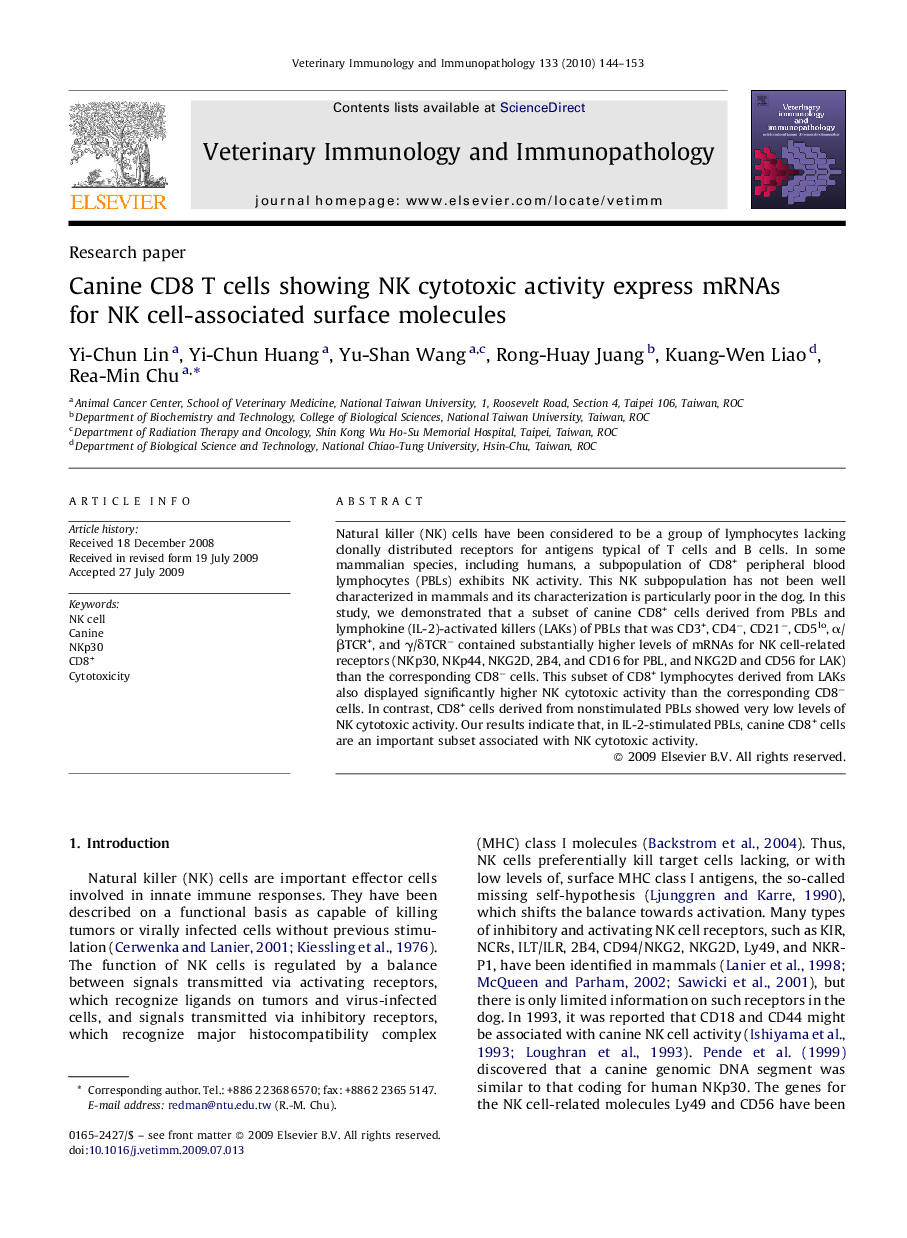| Article ID | Journal | Published Year | Pages | File Type |
|---|---|---|---|---|
| 2462488 | Veterinary Immunology and Immunopathology | 2010 | 10 Pages |
Natural killer (NK) cells have been considered to be a group of lymphocytes lacking clonally distributed receptors for antigens typical of T cells and B cells. In some mammalian species, including humans, a subpopulation of CD8+ peripheral blood lymphocytes (PBLs) exhibits NK activity. This NK subpopulation has not been well characterized in mammals and its characterization is particularly poor in the dog. In this study, we demonstrated that a subset of canine CD8+ cells derived from PBLs and lymphokine (IL-2)-activated killers (LAKs) of PBLs that was CD3+, CD4−, CD21−, CD5lo, α/βTCR+, and γ/δTCR− contained substantially higher levels of mRNAs for NK cell-related receptors (NKp30, NKp44, NKG2D, 2B4, and CD16 for PBL, and NKG2D and CD56 for LAK) than the corresponding CD8− cells. This subset of CD8+ lymphocytes derived from LAKs also displayed significantly higher NK cytotoxic activity than the corresponding CD8− cells. In contrast, CD8+ cells derived from nonstimulated PBLs showed very low levels of NK cytotoxic activity. Our results indicate that, in IL-2-stimulated PBLs, canine CD8+ cells are an important subset associated with NK cytotoxic activity.
